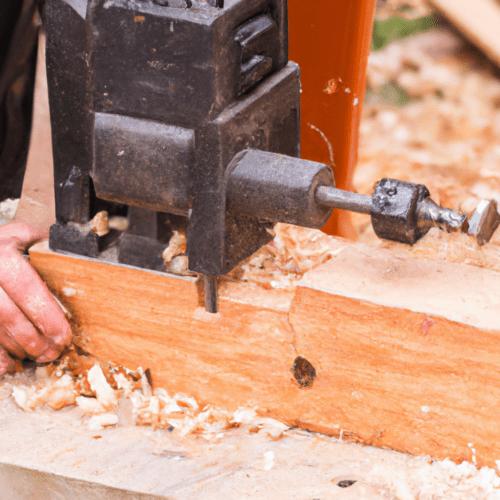Milling wood is a process of cutting and shaping wood to create a desired shape or size. It is a common practice in carpentry and woodworking, and is often done with a milling machine, which is a machine tool used to shape and cut materials such as wood, metal, and plastic.
The first step in milling wood is to select the type of wood you will be using. Different types of wood have different properties, so it is important to choose the right type for the job. Once the type of wood is selected, the next step is to prepare the wood for milling. This includes cutting the wood into the desired size and shape, and sanding it to remove any rough edges.
Once the wood is prepared, it is time to set up the milling machine. This includes setting the cutting depth, speed, and feed rate. It is important to adjust these settings to ensure the best results.
Once the machine is set up, the next step is to begin milling the wood. This is done by placing the wood in the machine and using the cutting tools to shape and cut the wood. Depending on the type of milling machine, the cutting tools may be a router bit, a drill bit, or a saw blade.
Once the wood is cut, it is important to check the results to make sure the desired shape and size have been achieved. If not, the settings may need to be adjusted and the process repeated.
Finally, the wood should be sanded and finished to give it a smooth, polished look. This can be done with a variety of sanding tools, such as sandpaper, a belt sander, or a power sander. Once the wood is sanded and finished, it is ready to be used in whatever project it was intended for.
Can you mill lumber with a table saw?
No, you cannot mill lumber with a table saw. A table saw is designed to make straight cuts in wood, and is not capable of milling lumber. To mill lumber, you would need a milling machine, which is a specialized tool designed to cut and shape wood into specific shapes and sizes. A milling machine typically has a rotating cutting head that is able to move in multiple directions, allowing it to cut and shape the wood in a variety of ways. It also has a variety of cutting tools, such as saw blades, router bits, and drill bits, that can be used to create different shapes and sizes. Milling machines are also able to cut more precisely than a table saw, making them ideal for creating intricate shapes and designs.
Is it worth milling your own lumber?
Milling your own lumber can be a great way to save money and get exactly the type of wood you need for your project. It can also be a great way to learn more about woodworking and gain experience in the craft. However, it is important to consider the cost of the equipment and the time it takes to mill the lumber before deciding if it is worth it.
The cost of the equipment can vary greatly depending on the type of mill you choose and the size of the logs you plan to mill. Chainsaw mills are the least expensive option, but they are limited in the size of logs they can handle. Band saws and circular saws are more expensive, but they can handle larger logs and produce more accurate cuts. You will also need to factor in the cost of blades, sharpening tools, and other accessories.
The time it takes to mill the lumber is also an important factor to consider. It can take several hours to mill a single log, depending on the size and type of mill you are using.
How long can logs sit before milling?
The amount of time logs can sit before milling depends on a variety of factors, including the species of wood, the size of the logs, the climate, and the storage conditions. Generally speaking, logs should be milled as soon as possible after they are cut. If logs are stored for an extended period of time, they should be stored in a dry, well-ventilated area to prevent rot and decay.
Softwoods, such as pine, spruce, and fir, can typically be stored for up to six months before milling. Hardwoods, such as oak, maple, and walnut, can usually be stored for up to one year before milling. However, these time frames can vary depending on the climate and storage conditions. For example, logs stored in a dry, well-ventilated area in a warm climate may be able to be stored for longer than logs stored in a damp, poorly-ventilated area in a cold climate.
